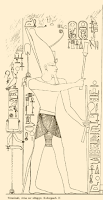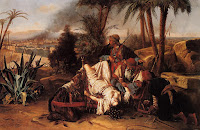Salve,
this post is not about the horses or riders.
It is about a book I finished reading yesterday.
Walter Spitzer (Auschwitz-Birkenau Memorial & Museum has a
page about him, and
Buchenwald Museum too) is a painter and sculptor living in France who wrote a book about his life between the early 1930s through the summer of 1945.
The book I devoured like a hungry wolf.
It is titled
Sauve par le dessin ( Saved by the drawing - I read the Polish edition,
Uratowany rysunkami, to my knowledge there is not English edition) and it is not a simple memoir.
For Walter is a Holocaust survivor who spent his best boyhood years in various Nazi German controlled places - starting with this ancestral home in
Cieszyn, Poland, through a shtetl & ghetto in
Gross (German added post 1939) Strzemieszyce, then
Auschwitz III, then the 12 day death-march, then
Gross Rossen, then the death-train, then
Buchenwald and then the escape into the woods(amidst fighting between the American forces and German defenders) from anther forced march to the final liberty brought to him and his friend Coco by the American Army.
I am not a novice to the genre of Holocaust memoirs and recollections, but it has been some time since I read one of those - nota bene it was
Byłam sekretarką Rumkowskiego: dzienniki Etki Daum edited by Elzbieta Cherezinska(2008 ed), about the
Litzmannstadt [Lodz] ghetto daily live by the secretary to
Chaim M. Rumkowski, the infamous (not only in my opinion) commander-in-chief of the ghetto.
So when I read the cover description and skimmed some first pages into the book, including
Eli Wiesel recommendation-introduction, I thought that this was one rather late memoir, after all this author was 77 years old in 2004, sort of another late bloomer to the now revered Jewish past but with much established
Holocaust industry, but when started reading the book I could not put it down.
And it is mostly because it is about this Polish-Jewish boy success, about the spectacular survival against all odds and about tons of Good Fortune in the world gone German Nazi pitiless, and to the core. Not a small part was played by the fact that Walter had been educating himself all that horrible days, months, and years, not only in the art of survival but also in art history and various aspects of fine art - drawing, photography, sculpture, painting etc
So if you think you have it bad and are in need of motivational or inspiration, do read this book.
Walter does his storytelling with such an ease and poise as with a stroke of a pen, pencil or brush - one might say: after all his trade has been fine arts.
He does not stop and writes about intimate aspects of his own life and lives of others, so the memoirs is much more personal and very coming of age at the same time.
They (museums, galleries etc) write about him that the Communists at the Buchenwald KL saved him, but he had had to come to them first, and to do so he crossed, at the peril of immediate death, the gate between the death and political camps there, putting all his life and the lie of his friend Coco in the hands of good Fortune. It apparently worked. He made good his promise to record the Hell by his pencil etc - eg this
one.
There are very personalized pictures as well - some etching and drawings by Walter, his own family and boyhood pictures, there is one of smiling beautiful Pola (you need to read the book to find out what role this photo played), then the American soldiers and unpublished photos from Buchenwald KL.
nota bene good reader tell US Holocaust Museum to get some money to translate this book into English pronto.
There is a
video about Walter, where he talks in his own English about this life and art, and there is also his
Facebook page. So you can explore away about this little Polish boy from
Cieszyn who made it alive and kicking from the German death machinery.
There are few horses that appear in his book too - one is a picture of their defunct stable with dusty horse tack at his home ground floor before the World War II, then 1938 and the Polish army cavalry and officer marching into Czechoslovakia to take
Zaolzie; then 5 years later during the infamous death-march from Blachhammer to Gross-Rossen Walter drew a big cart horse (in his estimation it was a loot from some French or Belgian farm) in some snowed-in German village farm, the sketch he did for the German farmer in exchange for some bread and margarine given to him upon inspection and final approval by the farmer.
Finally there is a wild joyride within the American-occupied zone, when he was lent a saddled cavalry horse to ride across the woods and mountains. The horse was Hungarian like its owner, they are being part of the Hungarian Cavalry division awaiting return to Hungary after the Nazi Germany capitulation. Walter did not knw how to ride but he did it anyway. Sweet ignorance and dexterity displayed by many a boy then, albeit this boy was special, he just survived the Hell and came back.
I strongly recommend this book, oh, I do!





















































